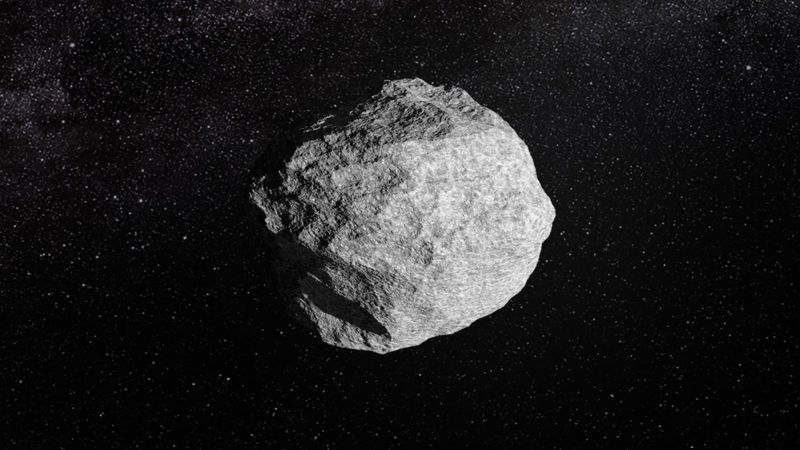In light of the ongoing advancements in astronomy, space agencies such as NASA and the European Space Agency (ESA) are rigorously monitoring a newly identified asteroid, designated as 2024 YR4. This celestial body poses a potential risk to Earth, with a calculated probability of 1.2% for an impact occasioned to occur on December 22, 2032. Both NASA and ESA have officially reported this finding, urging continued observations to ascertain the asteroid’s size and trajectory, which will refine the risk assessment over time.
Despite the aforementioned possibility of an impact, the likelihood of 2024 YR4 passing safely by Earth remains substantially high, approximated at nearly 99%. The focus on gathering more data is essential to determining the trajectory and potential risks associated with this asteroid, which is estimated to measure between 131 and 328 feet (40 to 100 meters) in diameter. Such sizes of asteroids are known to have the capability of causing extensive destruction locally if they were to collide with Earth, as pointed out by the ESA.
Dr. Paul Chodas, who directs the Center for Near Earth Object Studies (CNEOS) at NASA’s Jet Propulsion Laboratory based in Pasadena, California, emphasizes the uncertainty surrounding 2024 YR4’s actual dimensions. It is critical that astronomers conduct follow-up observations through various telescopes to nail down a precise measurement. Chodas further elaborates that should the asteroid be on the larger end of its estimated range, the potential impact could damage regions up to 31 miles from the site of collision. This possibility is amplified by the fact that the asteroid would be traveling at an incredible speed of approximately 17 kilometers per second (about 38,028 miles per hour) upon atmospheric entry.
The initial sighting of 2024 YR4 was facilitated by the Asteroid Terrestrial-impact Last Alert System (ATLAS) telescope located in Rio Hurtado, Chile, on December 27. This system represents one of the numerous initiatives funded by NASA aimed at detecting near-Earth asteroids. According to Davide Farnocchia, a navigation engineer at JPL and CNEOS, the circumstances surrounding the asteroid’s discovery were advantageous, as it was in proximity to Earth, making it luminous enough for detection.
Following its discovery, automated alert systems indicated that 2024 YR4 needed special attention. Consequently, it was prioritized on ESA and NASA’s asteroid risk lists due to its non-negligible impact chance. Since then, astronomers have utilized a variety of observatories, including the Magdalena Ridge Observatory in New Mexico and the Very Large Telescope in Chile, to track the asteroid, which at present is over 28 million miles away from Earth, steadily moving outward.
Challenges in observing the asteroid will arise as it continues to dim and drift away from Earth. Researchers anticipate needing larger telescopes to maintain visibility of the asteroid, which should remain observable through early April. Notably, 2024 YR4’s orbit will not bring it back near Earth until 2028. If the asteroid becomes unfocused before the risk of impact can be evaluated definitively, it will remain on monitoring lists until it reappears in view.
Farnocchia asserts that tracking data allows scientists to predict an asteroid’s future location effectively. The longer 2024 YR4 can be observed, the more certain the predictions become. While the probability of an impact is currently estimated at 1%, the likelihood of a future collision reduces significantly as tracking data improves.
It’s not uncommon for initial post-discovery impact probabilities to fluctuate. As scientists gather more observations, the chances often decrease, confirming that the object poses no threat. NASA and ESA routinely follow thousands of near-Earth asteroids, despite challenges in visibility due to their sizes.
In response to the asteroid’s potential threat level, the United Nations has activated two international asteroid response units: the International Asteroid Warning Network, which focuses on coordinating observation efforts, and the Space Mission Planning Advisory Group, which evaluates preparedness and mitigation strategies for any potential impacts. Mitigation measures could include asteroid deflection strategies or evacuation plans for impacted areas.
In September 2022, NASA executed the Double Asteroid Redirection Test (DART) mission to gauge the viability of asteroid deflection. The mission successfully altered the trajectory of a small asteroid named Dimorphos within a double-asteroid system, offering insights into potential strategies for deflecting larger asteroids threatening Earth. An upcoming ESA mission named Hera aims to further inspect the results of the DART impact.
If 2024 YR4 appears to pose a sustained threat towards the end of this observation window, careful consideration of mitigation strategies will be crucial. However, the immediate priority remains to gather more observational data, aiming to confidently ascertain the asteroid’s position and trajectory for 2032.



